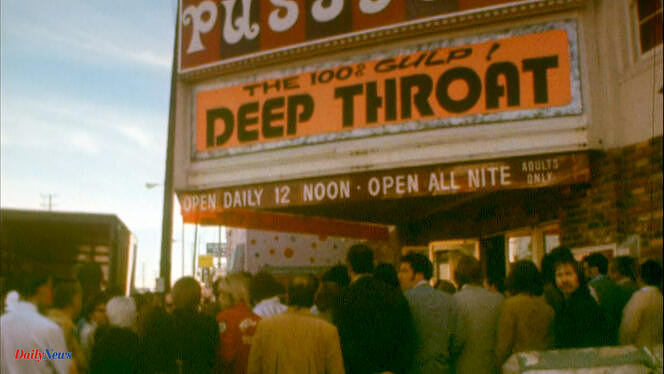Deep Throat, not everyone has seen it, but few people do not know the title of this historic and pioneering pornographic film, released in June 1972: a few months later, it would provide a nickname to the Watergate affair and made its star, Linda Lovelace – born Linda Susan Boreman (1949-2002) – a global celebrity.
Deep Throat, to which Agnès Poirier devoted a documentary in 2021, however had a precedent in the field of 35mm pornographic film projected in theaters: less the sexually explicit documentary Sexual Liberty in Denmark (1969), mentioned by Agnès Poirier, than the film (gay) Boys in the Sand (1971), by Wakefield Poole (1936-2021) – whose title parodied that of The Boys in the Band (Les Garçons de la bande, 1970), by William Friedkin.
Boys in the Sand caused a sensation when it was released in December 1971 in a Times Square theater in New York, and was favorably reviewed by Variety magazine. But its homosexual audience, although very numerous, is nothing compared to that of Deep Throat: before the censor banned its screening, everyone ran to see Linda's oral exploits.
Banned under Nixon
The New York Times Magazine of January 21, 1973 imposed the “porno chic” label, and celebrities came running in turn: Jackie Kennedy, Norman Mailer, Erica Jong, Truman Capote, Shirley MacLaine, Jack Nicholson, etc. Its director, Gerard Damiano (1928-2008) – hairdresser by profession – emerges from anonymity: one evening when they are in the same restaurant, the filmmaker John Cassavetes (1929-1989) introduces himself to him…
During the Nixon era, Deep Throat was constantly banned. Its main actor, Harry Reems (1947-2013), arrested in 1974, narrowly escaped five years in prison. Damiano and Lovelace will never really make any money with this film: produced with 25,000 dollars, loaned by a producer close to the Mafia, Deep Throat will bring in at least 600 million dollars which will fall into the coffers of the criminal organization.
The actress wrote two books of erotic confessions in 1973. But, in Ordeal (Citadel Press, 1980, untranslated) and Out of Bondage (Citadel Press, 1986, untranslated), Linda Lovelace reverses her statements and accuses her husband and “agent” for prostituted her, beat her and forced her into these acts under threat. From then on defended by anti-pornography feminists, including Gloria Steinem, she would say at the end of her life that she had been used by them.
Deep Throat, When Porn Came Out of the Ghetto deals with the subject satisfactorily. But it cannot be compared to Inside Deep Throat (2005), by Fenton Bailey and Randy Barbato, with much more substantiated information.












